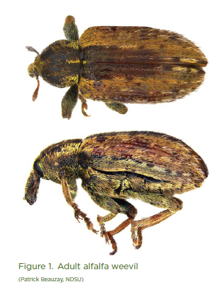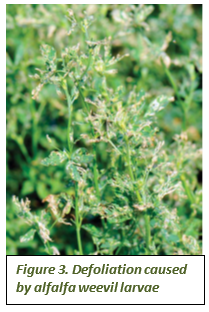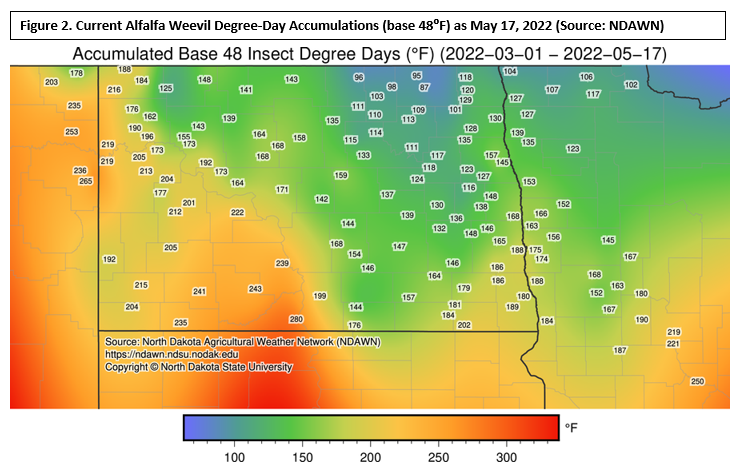Cool Spring Slows Insect Pest Development (05/19/22)
Due to the cool wet spring, insect development has been delayed since insects are cold-blooded or their body temperatures are at whatever the outside temperature may be.
Alfalfa weevils (Fig. 1) should be starting to emerge mid- to late May. However, the degree day model for alfalfa weevil shows that we are behind due to the cool spring. Only the southwest to northwest areas of the state have accumulated enough degree days (200 ADD) for adults to start emergence (Fig. 2).
Adult alfalfa weevils overwinter in shelterbelts and wooded areas outside the alfalfa field. Adults are only ¼ inch long, brown with a distinctive dark brown stripe running down the center of the back (Fig. 1). Antennae are elbowed, clubbed and the snout is blunt. Alfalfa weevil larvae feed on the leaves causing small pinholes from early instar larvae to heavily skeletonized leaves (Fig. 3) from later (mature) instar larvae. They even may cause crown injury, especially during drought like experienced in 2021. The recent moisture will help weevil damaged alfalfa fields to recover this year. It is still important to scout fields for economic populations of alfalfa weevil and treat with an insecticide if necessary. In North Dakota, alfalfa weevil is most damaging to the alfalfa before the first cutting.



Scouting should begin immediately after egg hatch, and fields should be scouted weekly up through the first cutting. Egg hatch occurs at 300 accumulated degree-days. A 15-inch sweep net is useful for finding adults and larvae in alfalfa fields. More on scouting and thresholds in the next issue.
For more information, see the NDSU Extension publication Integrated Pest Management of Alfalfa Weevil in North Dakota E1676
Extension Entomologist
